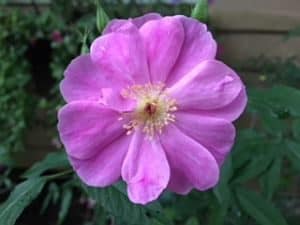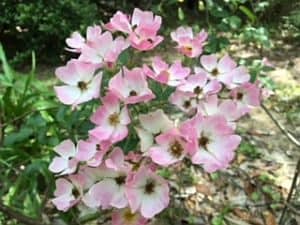
Rose and Plant Propagation
Propagating your favorite plants can be very gratifying. It is a good way to get more plants and of saving money. There are different ways of propagating plants by seeds, air layering, tip layering, leaf cuttings but stem cuttings is one of the most popular ways. Master Gardener Don Hanson recently conducted a rose propagation workshop, which was very informative and inspiring. Don has been a master gardener of Greater New Orleans for many years and has been dedicated to caring for the roses at the Botanical Gardens in City Park. The techniques he taught us were simple and can be applied to other plants besides roses.
Don cuts about 8 or 9 inches long (pencil thickness), from the stem of the rose (that has bloomed) or plant you are trying to propagate. Cut longer stems and place in water if you are unable to propagate right away. Don says to always make another fresh cut at a 45 degree angle for more exposure to rooting hormone and about 1/4 inch above a bud. Scarify the angled tip by making fresh scraps down the bottom edge of the stem to expose the cambiun tissue. Remove all lower leaves and stems. Wet the end in water, then dip in rooting hormone. Shake off any excess hormone. Use a pencil or finger to make a hole in the soil. Plant the stem piece to be rooted in the soil with at least 2 nodes in the soil, being carful not to rub off the rooting hormone and gently cover with soil. Water soil lightly with a mist of water or you can water before planting just enough to create some dampness in the soil. Cover by placing entire pot in large zip lock bag and sealing it from the top. If planting directly in ground, plant under azaleas or another shady area. Cover long enough until plant starts to show signs of growth. Test green stems by gently tugging to test resistance. Be patient and move plants to a permanet spot after gradually exposing it to more sun after several weeks. Transplanting in the hottest time of the year is not recommended.
Another method used to root roses especially old roses is to make a cutting from a stem where a rose had already bloomed to about 4 or 5 inches long. Cut off any buds/spent flowers and cut in half any large leaves. Wrap the bottom end of cutting in wet spaghnum moss. place the wrapped cutting in a zip lock sandwich or quart sized bag. Blow air into zip bag and close inflated bag with cutting inside. Place outside under plants or on a patio in shade to part shade. Do not place cuttings in full sun. Do not water again. This method takes a while but you can check to see if any roots develop on cuttings without opening the bag. Once roots develop, transplant to a pot or a permanent place gradually exposing to more sun as in the other method
Tip layering has been a successful accident and quite easy for me. roses or plants that have long canes are tipped to the ground while still attached to the mother plant. You can use bricks to weigh stems to the ground, cover stems with soil or pin down the tip of a cane to soil with wire. Bend or lay a cane down horizontally and weigh down in multiple locations in soil or in mulch. Water and treat as usually as it benefits from still being attached to the mother plant. Roots will develop where the stem comes in contact with the ground. Cut with a sharp shovel to separate baby plants.
The best time for taking cuttings is the cooler months of November to March but cuttings can be taken anytime. Experiment with different methods as sometimes rooting can be unsuccessful but taking multiple cuttings and using different conditions can guarantee some success. Label cutting with name and date. Remember there are always exceptions to every rule.
Submitted by Karen Blackburn





